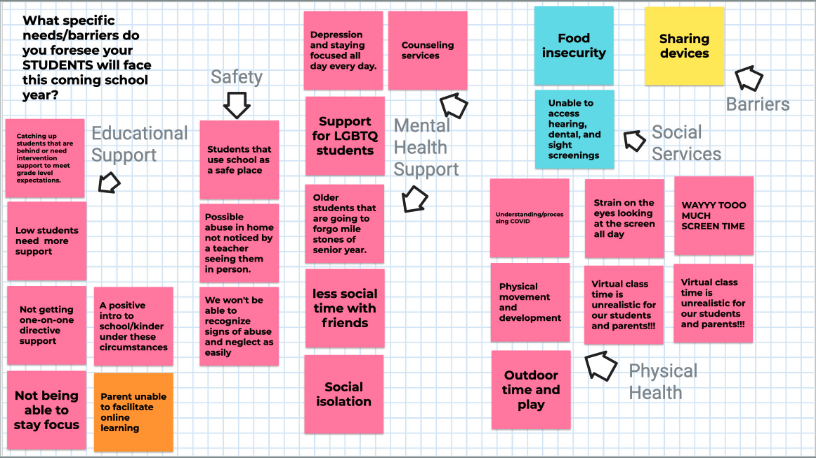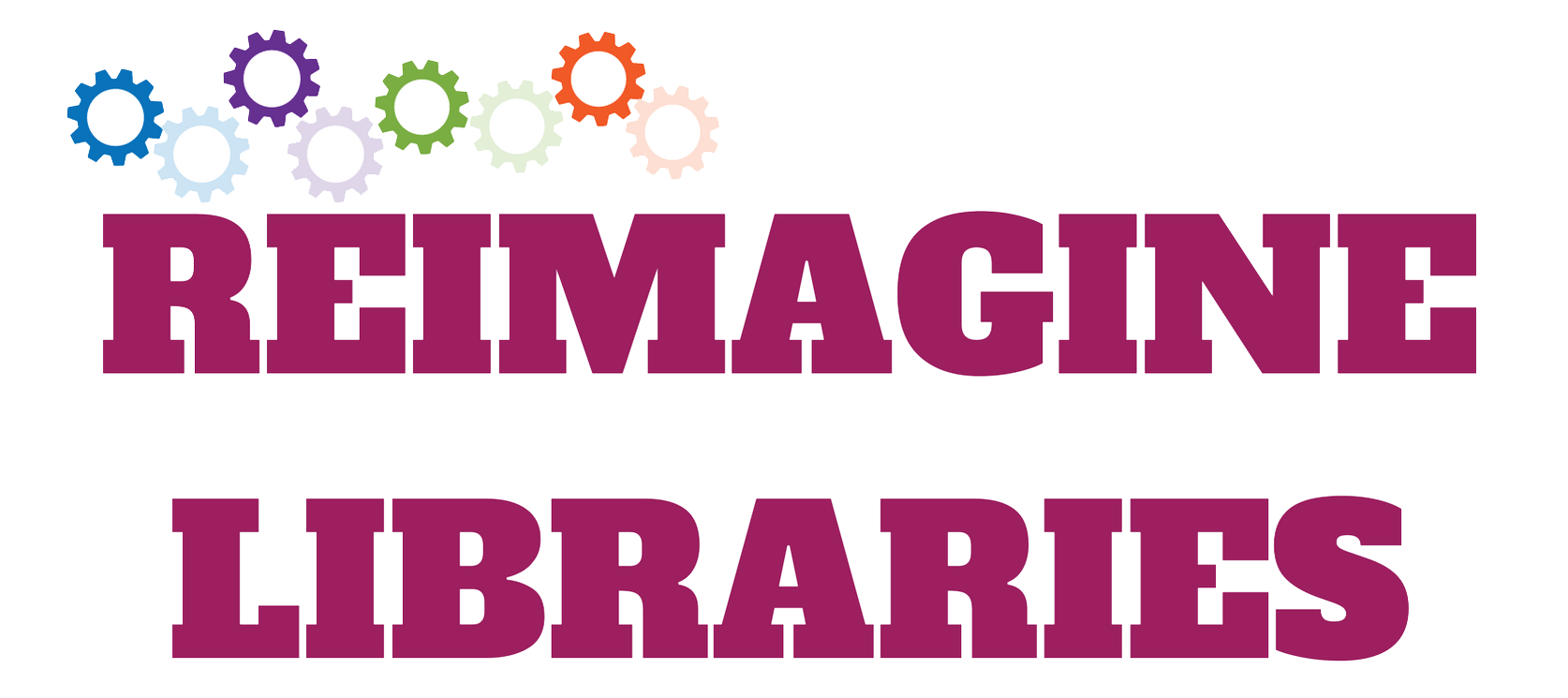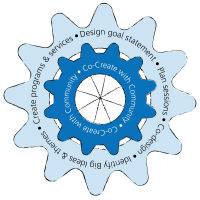Co-Create with Community
Overview
With relationships and knowledge of community needs and assets in place, it’s time to start co-creating solutions with community members. Using co-design techniques democratizes the design of services by equalizing the power dynamics between multiple community assets, making everyone involved equal partners in the design of programs and services (Druin, 2002; Harrington et al, 2019). Co-design emphasizes designing with community members and not designing for them.
Steps for co-designing include:
- Begin the process by developing design goal(s) for the co-design session(s) with all community partners/assets identified. These goals are based on the intended outcomes that were derived from the Learn about Community essential task. The following design goal examples were developed by the library staff that we worked with and their community partners during the crises of 2020:
- To create an array of programs that support recognition of youth-led BLM efforts and actions that have occurred in the community over the last several months.
- To design and implement, with a network of community youth development organizations, services, and supports that help to mitigate the virtual learning challenges K-12 youth and families face during the upcoming school year.
- Select co-design techniques that are well suited to achieve the design goal. Techniques are chosen based on the experience that the co-designers have with the co-design techniques, as well as the stage of the design process (i.e. brainstorming, prototyping, or refining an almost final program). These activities may take place over several meetings and include organizing and building the session plan.
- Conduct co-design sessions, with each session building on previous ones, keeping the design goal in mind. As each session unfolds, analyze the big ideas into coherent themes that will inform the design of programs and services.
Staff can work with community members to continue the co-design process to refine the design of programs and services from initial concept to final form. Repeat co-design sessions as needed and as time allows.
Tools
Before you schedule a co-design session, you need to create a plan to ensure that your goals for the session are met. Some of the key elements of a co-design session plan include: design goal statement, question of the day, materials needed, design activity, and sharing of ideas that emerged. Use this template to create the co-design session plan around a goal that emerges from what you have learned about and with the community (E. Bonsignore, e-mail communication, November 28, 2020). See a completed session plan as an example.
Some co-design techniques that can be used during the Design Activity of the session plan are listed in Subramaniam (2016) and Bonsignore (2020). To learn more about co-design techniques, see Fails, Guha & Druin (2013).
Essential Task in Practice
During the summer of 2020, staff at the Austin Public Library Central Library co-designed with teachers at the Harmony School solutions for supporting youth virtually at the beginning of the Fall 2020 school year. Their design goal was to design and implement services and supports that help to mitigate the virtual learning challenges K-12 youth and families were likely to face in the upcoming school year. Due to the COVID-19 pandemic, teachers and staff expected K-12 schools to continue to be virtual in the fall and public library staff wanted to be able to support youth and teachers. They began by brainstorming immediate needs and barriers, anticipated needs and barriers for the fall 2020 school year, and ways in which the library could support teachers in a virtual learning environment. Co-designers used Jamboard to brainstorm and, after their initial brainstorming, they categorized the big themes into topics such as educational support, mental health, physical health, and safety (shown below).

The public library staff used the ideas generated from the co-design sessions to begin planning for the fall 2020 school year. At the end of the co-design sessions, library staff asked for community direction on how they would like the library to stay accountable to them. The group of teachers preferred a newsletter, while some of the other groups requested a living dashboard that would be updated periodically. (See the Austin dashboard developed through this work.)
Do It With Others [DIWO]*
To get started doing this on your own (this is an iterative process):
- Define an overarching design goal statement with community members – what would those involved like to work towards
- Decide on which co-design techniques are best suited to achieve the design goal
- Conduct co-design sessions – as many as needed – sessions will build on each other
- Analyze the big ideas into coherent themes that will inform the design of programs and services
- Derive/create programs and services; and• Repeat co-design sessions as needed.
*We use the phrase Do It With Others (DIWO) instead of Do it Yourself (DIY) which we derived from the maker movement vernacular (see Maravilhas & Martin, 2017) to reflect the nature of these steps that emphasize the focus on community and collectivism, further calling library staff to embrace the public servant mindset.
References
Bonsignore, E. (2020). Co-Design Techniques and When to Use them. [Google doc].
Fails, J. A., Guha, M. L., & Druin, A. (2013). Methods and techniques for involving children in the design of new technology for children. Foundations and Trends® in Human–Computer Interaction, 6(2), 85-166. Available at: http://www.cs.umd.edu/hcil/trs/2013-23/2013-23.pdf
Maravilhas, S., Martins., J. (2017). Tacit Knowledge in maker Spaces and FAB LABs: From DO IT YOURSELF (DIY) to DO IT WITH OTHERS (DIWO). Handbook of Research on Tacit Knowledge Management for Organizational Success. Available at: https://www.researchgate.net/publication/316091165_Tacit_Knowledge_in_Maker_Spaces_and_FAB_LABS_From_DO_IT_YOURSELF_DIY_to_DO_IT_With_OTHERS_DIWO
Subramaniam, M. (2016). Designing the library of the future for and with teens: Librarians as the ‘Connector’ in Connected Learning. Journal of Research on Libraries and Young Adults, 7(2), 1-18. Available at: http://www.yalsa.ala.org/jrlya/2016/06/designing-the-library-of-the-future-for-and-with-teens-librarians-as-the-connector-in-connected-learning/

